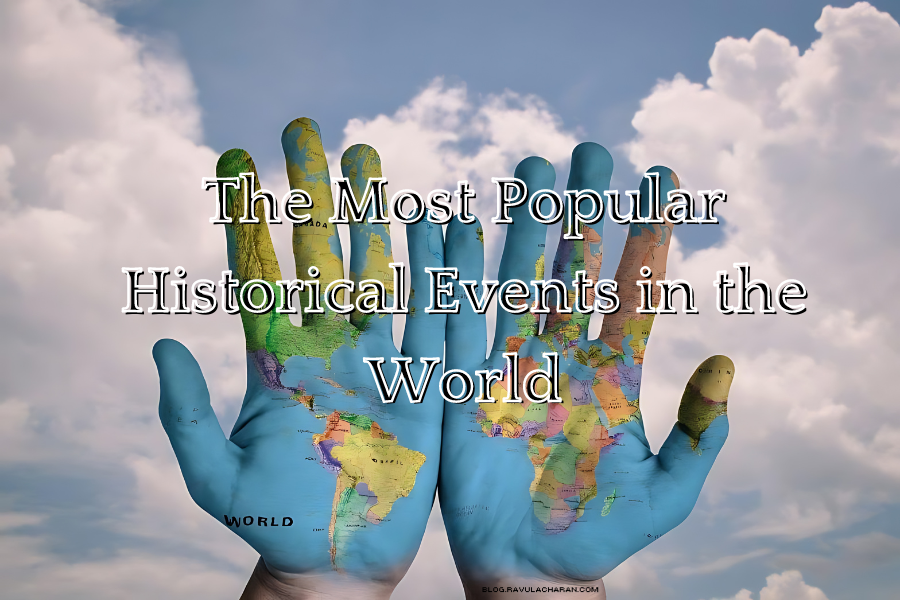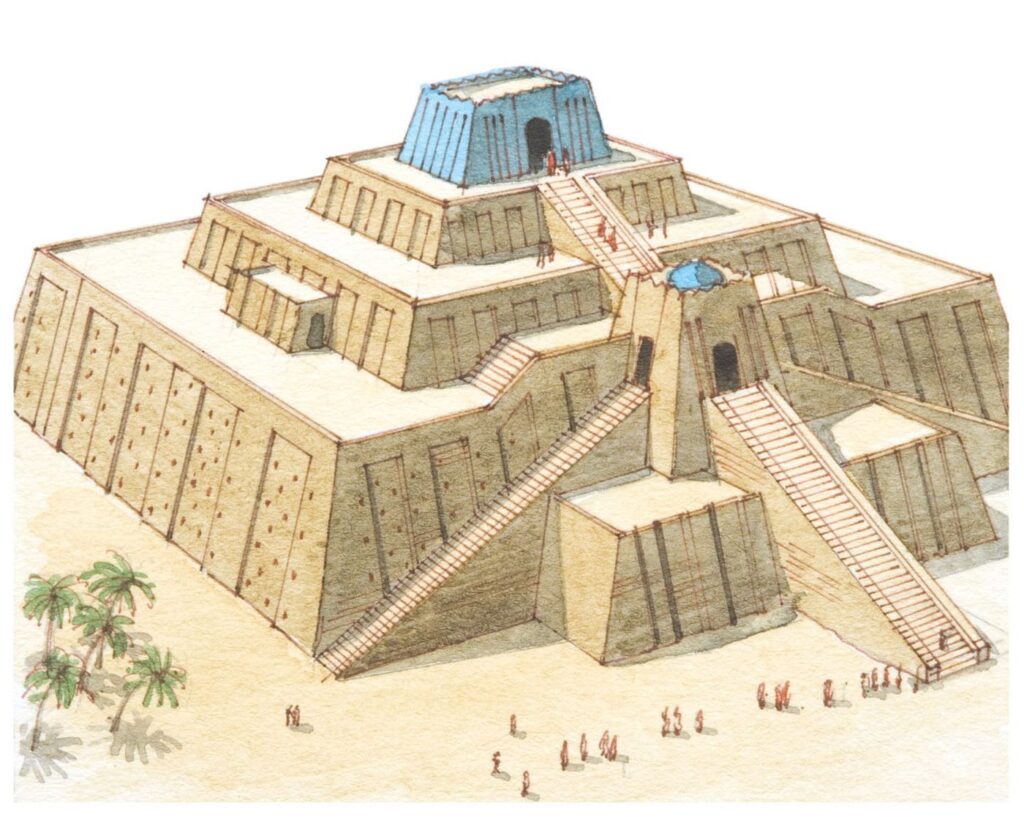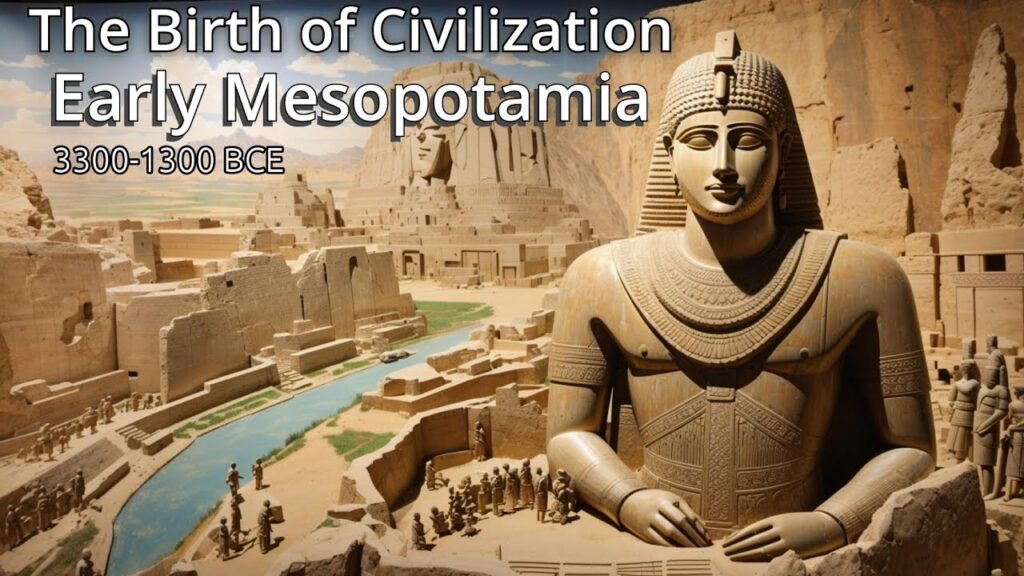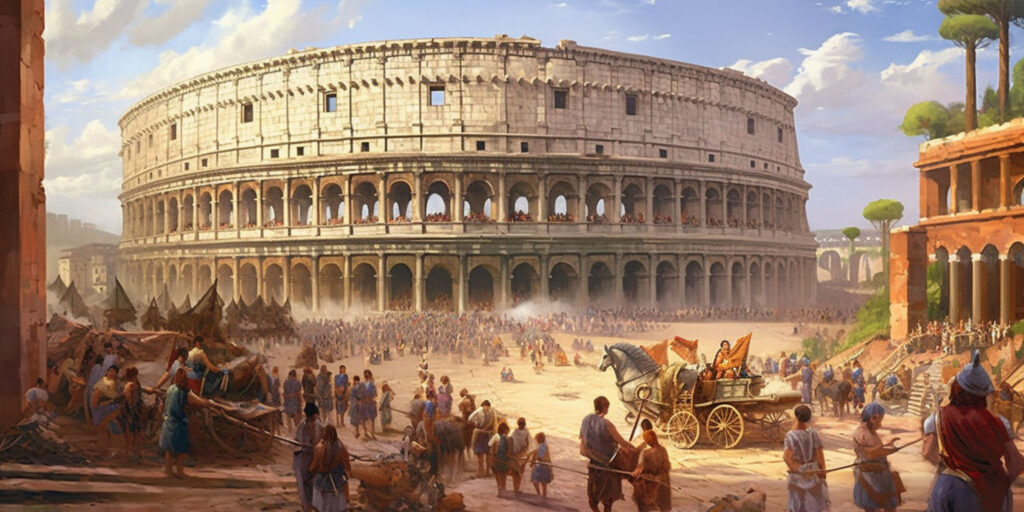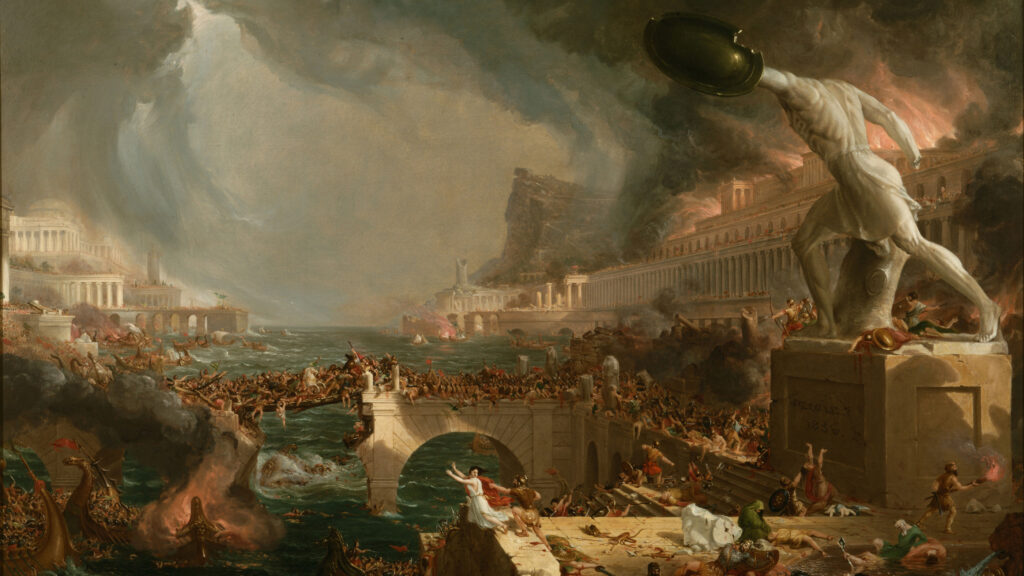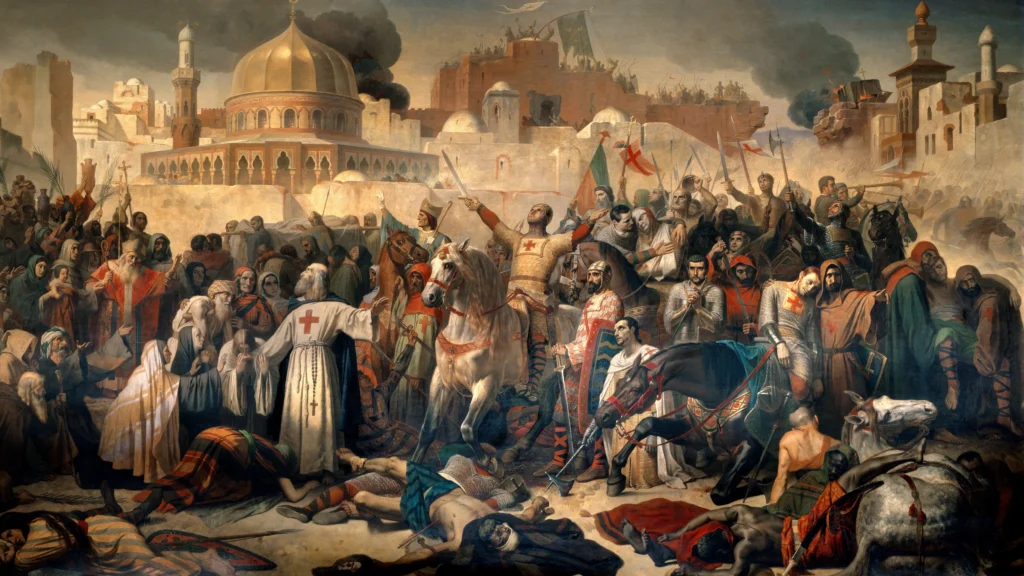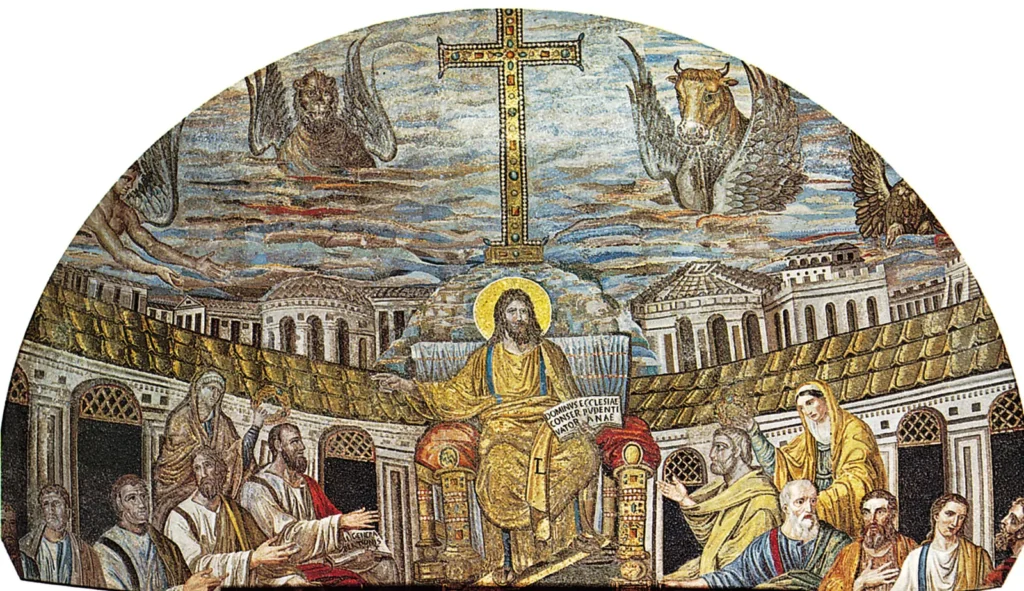
A Comprehensive History of Christianity: An A-Z Exploration
Christianity, one of the world’s major religions, has a rich and multifaceted history that spans over two millennia. This article provides an extensive overview of Christianity from A to Z, offering in-depth information and detailed descriptions of its key aspects, developments, and figures.
A – Apostles and Ancient Church
Apostles
The apostles were the primary disciples of Jesus Christ, entrusted with spreading his teachings and establishing the early Christian church. The most prominent apostles include:
- Peter: Often considered the leader of the apostles, Peter is traditionally viewed as the first Pope. He was a fisherman called by Jesus and played a crucial role in the early church.
- Paul: Originally known as Saul of Tarsus, Paul was a former persecutor of Christians who converted after a dramatic vision of Christ. He authored many of the New Testament epistles and was instrumental in spreading Christianity beyond Jewish communities.
- James: The brother of Jesus, James was a key figure in the Jerusalem church and is credited with writing the Epistle of James.
- John: Known for his close relationship with Jesus, John authored the Gospel of John and the Book of Revelation.
Ancient Church
The ancient church refers to the period of Christianity from its inception to the fall of the Western Roman Empire in 476 AD. Key aspects include:
- Persecution: Early Christians faced significant persecution from Roman authorities. Notable martyrs include Polycarp and Ignatius of Antioch.
- Councils: The First Council of Nicaea (325 AD) was significant in defining Christian doctrine, including the Nicene Creed. Subsequent councils, such as the Council of Chalcedon (451 AD), addressed theological disputes and clarified the nature of Christ.
- Development of Canon: The process of determining the canon of the New Testament involved debates over which writings were authoritative and inspired. This process was largely settled by the 4th century.
- Church Fathers: Influential theologians like Augustine of Hippo, Jerome, and Origen contributed to early Christian theology and biblical interpretation.
- Rise of Monasticism: Monasticism began to develop during this period, with figures like St. Benedict establishing monastic rules that influenced Christian life and spirituality.
B – Bible and Biblical Figures
Bible
The Bible is the central sacred text of Christianity, divided into two main sections:
- Old Testament: Shared with Judaism, it includes historical books (e.g., Genesis, Exodus), wisdom literature (e.g., Psalms, Proverbs), and prophetic writings (e.g., Isaiah, Jeremiah).
- New Testament: Focuses on the life and teachings of Jesus Christ, including the four Gospels (Matthew, Mark, Luke, John), the Acts of the Apostles, the Epistles (letters), and the Book of Revelation.
Biblical Figures
Key figures in the Bible include:
- Jesus Christ: Central to Christianity, Jesus is believed to be the Son of God and the Savior of humanity. His life, crucifixion, and resurrection are foundational to Christian belief.
- Moses: A prophet and leader who, according to the Old Testament, led the Israelites out of Egypt and received the Ten Commandments.
- David: A king of Israel, known for uniting the tribes and establishing Jerusalem as the capital. He is traditionally credited with composing many of the Psalms.
- Mary: The mother of Jesus, revered for her role in the Incarnation and celebrated in doctrines like the Immaculate Conception and Assumption.
- Paul: Apart from his role as an apostle, Paul’s epistles address various issues in early Christian communities and provide theological insights.
C – Church History and Councils
Early Church History
- Persecutions: Early Christians were persecuted by the Roman Empire, including under emperors like Nero and Diocletian. These persecutions were often fueled by suspicions of disloyalty and refusal to worship Roman gods.
- Constantine and the Edict of Milan: In 313 AD, Emperor Constantine issued the Edict of Milan, which legalized Christianity and ended persecution. Constantine’s conversion and subsequent support were pivotal in Christianity’s growth.
- Council of Nicaea: The First Council of Nicaea in 325 AD, convened by Constantine, addressed the Arian controversy and produced the Nicene Creed, affirming the divinity of Christ.
Medieval Church History
- Schism of 1054: The Great Schism divided Christianity into Western (Roman Catholic) and Eastern (Orthodox) branches. Key issues included disputes over papal authority and theological differences.
- Crusades: A series of religious wars initiated by the Church to reclaim the Holy Land from Muslim control, including the First Crusade (1096-1099) and the Fourth Crusade (1202-1204).
- Inquisition: Established to combat heresy, the Inquisition included the medieval Inquisition (12th-15th centuries) and the Spanish Inquisition (15th-19th centuries).
Reformation and Counter-Reformation
- Protestant Reformation: Initiated by Martin Luther’s 95 Theses in 1517, the Reformation challenged the practices and doctrines of the Roman Catholic Church, leading to the formation of various Protestant denominations.
- Catholic Counter-Reformation: The Catholic Church responded with the Counter-Reformation, marked by the Council of Trent (1545-1563), which addressed reform issues and reaffirmed Catholic doctrines.
Modern Church History
- Vatican II: The Second Vatican Council (1962-1965) brought significant reforms to the Catholic Church, including changes in liturgy, ecumenism, and the Church’s approach to modern issues.
- Ecumenism: Efforts to promote unity among Christian denominations, including dialogues between Catholic, Orthodox, and Protestant churches, and organizations like the World Council of Churches.
D – Denominations and Doctrine
Denominations
- Roman Catholicism: The largest Christian denomination, characterized by its adherence to the authority of the Pope and traditions such as the seven sacraments, including the Eucharist and Confession.
- Eastern Orthodoxy: Includes the Orthodox churches in Eastern Europe and the Middle East, known for their adherence to the Nicene Creed, icon veneration, and a conciliar form of governance.
- Protestantism: A broad category encompassing various denominations such as Lutheranism, Calvinism, and Anglicanism, each with distinct theological and liturgical practices.
- Anglicanism: Originating from the Church of England, Anglicanism combines elements of Catholicism and Protestantism and is known for its liturgical tradition and the Book of Common Prayer.
- Methodism: A Protestant denomination founded by John Wesley, emphasizing personal holiness, social justice, and a methodical approach to Christian living.
Doctrine
- Trinity: The belief in one God in three persons—Father, Son, and Holy Spirit. This doctrine is central to most Christian denominations and defines the nature of God.
- Salvation: Christians believe that salvation is achieved through faith in Jesus Christ, whose death and resurrection provide redemption from sin and eternal life.
- Original Sin: The doctrine that humanity inherits a sinful nature due to the actions of Adam and Eve, necessitating the need for redemption through Christ.
- Eschatology: The study of end times, including beliefs about the Second Coming of Christ, the final judgment, and the ultimate destiny of humanity.
E – Early Christian Saints and Evangelism
Early Christian Saints
- St. Augustine: An early Christian theologian and philosopher whose works, including “Confessions” and “The City of God,” significantly influenced Western Christianity.
- St. Benedict: Known for his Rule of St. Benedict, which became the foundation for monastic life in the Western Christian tradition.
- St. Francis of Assisi: Founder of the Franciscan Order, known for his commitment to poverty, simplicity, and care for creation.
Evangelism
- Missionary Work: The spread of Christianity through missionary efforts, including the work of figures like St. Patrick in Ireland and Jesuit missionaries in Asia and the Americas.
- Modern Evangelism: Involves various strategies for sharing the Christian message, including television ministries, revivals, and global missions.
F – Festivals and Feasts
Christian Festivals
- Christmas: Celebrates the birth of Jesus Christ on December 25. Traditions include church services, nativity scenes, and festive meals.
- Easter: Commemorates the resurrection of Jesus from the dead. It is the most important Christian festival, marked by church services, feasting, and various customs like egg decorating.
- Pentecost: Celebrates the descent of the Holy Spirit upon the apostles, traditionally observed 50 days after Easter.
Feasts
- Feast of the Assumption: Celebrates the belief that Mary, the mother of Jesus, was assumed body and soul into heaven. Observed on August 15.
- Feast of All Saints: Honors all saints, known and unknown, on November 1. It is followed by All Souls’ Day on November 2, which remembers the faithful departed.
G – Growth and Global Impact
Growth
- Spread Across Europe: Christianity spread throughout Europe, becoming the dominant religion in the Roman Empire and influencing European history and culture.
- Colonial Expansion: European colonial powers spread Christianity to the Americas, Africa, and Asia, leading to the establishment of Christian communities worldwide.
Global Impact
- Social Justice: Christian teachings have inspired movements for social justice, including efforts to combat slavery, promote education, and address poverty.
- Art and Culture: Christianity has profoundly influenced Western art, literature, music, and architecture, from medieval cathedrals to modern Christian music.
H – Historical Figures and Heresies
Historical Figures
- Martin Luther: A key figure in the Protestant Reformation, known for his 95 Theses and criticism of Church practices.
- John Calvin: A theologian who developed Calvinism, emphasizing the sovereignty of God and predestination.
Heresies
- Arianism: A theological belief that denied the full divinity of Christ, leading to the First Council of Nicaea’s condemnation.
- Gnosticism: An early heretical movement that claimed secret knowledge of God was necessary for salvation, often conflicting with orthodox Christian teachings.
I – Incarnation and Interfaith Relations
Incarnation
- Doctrine of the Incarnation: The belief that Jesus Christ is both fully God and fully human. This doctrine is central to Christian theology and is celebrated in the Feast of the Incarnation (Christmas).
Interfaith Relations
- Dialogue with Other Religions: Christianity has engaged in interfaith dialogue with Judaism, Islam, Hinduism, and other religions, seeking mutual understanding and cooperation.
J – Jesus Christ and Jewish Roots
Jesus Christ
- Historical Jesus: The historical figure of Jesus of Nazareth, whose life and teachings form the foundation of Christianity.
- Christological Debates: Discussions about the nature of Christ, including debates on whether Jesus is divine, human, or both, leading to key theological formulations like the Nicene Creed.
Jewish Roots
- Jesus and Judaism: Christianity emerged from Judaism, with Jesus and his early followers being Jewish. The New Testament reflects Jewish customs and interpretations of Old Testament prophecies.
K – Kingdom of God and Key Teachings
Kingdom of God
- Teachings of Jesus: Jesus spoke frequently about the Kingdom of God, describing it as both a present reality and a future hope. The Kingdom is understood as God’s reign over the earth and the fulfillment of God’s promises.
Key Teachings
- Love and Forgiveness: Central teachings of Jesus include love for one’s neighbor, forgiveness of sins, and the importance of compassion and mercy.
L – Liturgy and Liturgical Year
Liturgy
- Definition: The form and structure of public worship in Christian traditions, including rituals, prayers, and sacraments.
- Liturgical Traditions: Different Christian denominations have distinct liturgical practices, such as the Roman Catholic Mass, the Eastern Orthodox Divine Liturgy, and Protestant services.
Liturgical Year
- Church Calendar: The liturgical year includes seasons such as Advent, Christmas, Lent, Easter, and Pentecost, each with its own focus and observances.
- Feasts and Seasons: The calendar is marked by various feasts and seasons that commemorate key events in the life of Jesus and the saints.
M – Missionary Work and Monasticism
Missionary Work
- Early Missions: Early Christian missionaries like Paul traveled extensively to spread the gospel.
- Modern Missions: Contemporary missionary efforts include establishing churches, providing humanitarian aid, and engaging in interfaith dialogue.
Monasticism
- Origins: Monasticism began with figures like St. Anthony of Egypt, who sought to live a life of asceticism and devotion in solitude.
- Monastic Orders: Various orders, including the Benedictines, Franciscans, and Jesuits, have played significant roles in education, charity, and spiritual life.
N – New Testament and Notable Figures
New Testament
- Gospels: The four Gospels (Matthew, Mark, Luke, John) provide accounts of Jesus’s life, teachings, and resurrection.
- Epistles: Letters written by apostles such as Paul, Peter, and John to early Christian communities, addressing theological and practical issues.
Notable Figures
- St. Peter: Traditionally seen as the leader of the early church and the first Pope.
- St. Paul: His letters and missionary work significantly shaped Christian theology and practice.
O – Orthodox Christianity and Outreaches
Orthodox Christianity
- Eastern Orthodox Church: A major branch of Christianity, characterized by its adherence to traditional practices, the veneration of icons, and the authority of ecumenical councils.
- Distinctive Features: Includes a rich tradition of liturgy, theology, and monasticism, with a strong emphasis on the continuity of the apostolic faith.
Outreaches
- Social Services: Many Christian organizations engage in outreach activities, including providing education, healthcare, and disaster relief.
- Cultural Impact: Christianity’s influence extends into art, literature, and social values, shaping cultural norms and artistic expressions.
P – Popes and Protestantism
Popes
- Papal Authority: The Pope, as the Bishop of Rome, is considered the spiritual leader of the Roman Catholic Church. Key figures include St. Peter, Pope Gregory I, and Pope John Paul II.
- Papal Encyclicals: Letters written by the Pope addressing important theological, social, and moral issues.
Protestantism
- Origins: Began with the Reformation, challenging the authority and practices of the Roman Catholic Church.
- Major Branches: Includes Lutheranism, Calvinism, Anglicanism, and other denominations with varying theological emphases and practices.
Q – Questions and Quests
Questions
- Theological Questions: Issues such as the nature of God, the problem of evil, and the relationship between faith and reason have been central to Christian theology.
- Ethical Questions: Christian ethics address issues like social justice, sexuality, and the role of women in the church.
Quests
- Quest for Historical Jesus: Scholarly efforts to understand the historical figure of Jesus, separating historical facts from theological interpretations.
- Quest for Unity: The ongoing effort among Christian denominations to achieve greater unity and cooperation while respecting doctrinal differences.
R – Reformation and Renewal
Reformation
- Martin Luther: His 95 Theses criticized the sale of indulgences and other Church practices, sparking the Protestant Reformation.
- John Calvin: His work led to the development of Reformed theology and the establishment of Calvinist churches.
Renewal Movements
- Pentecostalism: Emphasizes the work of the Holy Spirit, including spiritual gifts like speaking in tongues and healing.
- Charismatic Movement: Similar to Pentecostalism, it seeks to revive spiritual gifts and emphasize a personal experience of God.
S – Saints and Sacraments
Saints
- Canonization: The process of declaring someone a saint involves verifying miracles and a life of virtue.
- Major Saints: Includes figures like St. Augustine, St. Teresa of Ávila, and St. Ignatius of Loyola.
Sacraments
- Roman Catholic Sacraments: Include Baptism, Eucharist, Confirmation, Reconciliation, Anointing of the Sick, Holy Orders, and Matrimony.
- Protestant Sacraments: Most Protestant denominations recognize Baptism and the Lord’s Supper as sacraments, with variations in their understanding and practice.
T – Theology and Traditions
Theology
- Systematic Theology: The study of Christian doctrine, including topics like the nature of God, Christology, and eschatology.
- Practical Theology: Focuses on how theological principles are applied in daily Christian life and ministry.
Traditions
- Liturgical Traditions: Various Christian traditions follow specific liturgical practices, such as the Roman Catholic Mass, the Eastern Orthodox Divine Liturgy, and Anglican services.
- Cultural Traditions: Christianity has influenced various cultural practices and customs around the world, including holiday celebrations, rituals, and social norms.
U – Unity and Universal Church
Unity
- Ecumenical Efforts: Initiatives aimed at fostering unity among Christian denominations, such as the World Council of Churches and various bilateral dialogues.
- Interdenominational Movements: Efforts to bridge divides between different Christian groups, including collaborative projects and shared worship services.
Universal Church
- One, Holy, Catholic, and Apostolic Church: The traditional description of the Church, emphasizing its universality, holiness, and continuity with the apostolic tradition.
- Global Church: Christianity’s global presence, with diverse expressions and practices across different cultures and regions.
V – Virtues and Veneration
Virtues
- Cardinal Virtues: Includes Prudence, Justice, Fortitude, and Temperance, which are considered fundamental to moral life.
- Theological Virtues: Faith, Hope, and Charity (Love) are viewed as essential for a relationship with God.
Veneration
- Veneration of Saints: The practice of honoring saints and asking for their intercession. This includes the veneration of relics and the celebration of feast days.
- Mary Veneration: In Roman Catholicism, Mary, the mother of Jesus, is venerated with titles such as Queen of Heaven and Mediatrix.
W – Worship and Women in
Christianity**
Worship
- Forms of Worship: Includes individual and communal practices such as prayer, singing hymns, reading scripture, and participating in sacraments.
- Worship Styles: Varies among denominations, ranging from formal liturgies to contemporary praise services.
Women in Christianity
- Role of Women: Historically, women’s roles in the church have evolved, from early deaconesses and martyrs to contemporary leaders and theologians.
- Feminist Theology: Examines the role of women in the church and advocates for gender equality and inclusion.
X – Xenophobia and Xenodocheion
Xenophobia
- Historical Context: Instances of xenophobia within Christian history, including conflicts with other religions and cultures.
- Modern Challenges: Addressing xenophobia and promoting inclusivity in contemporary Christian communities.
Xenodocheion
- Hospitality to Strangers: The concept of welcoming and providing for strangers, as taught in the parable of the Good Samaritan and other biblical passages.
Y – Youth and Youth Movements
Youth Movements
- Early Youth Movements: Includes the establishment of Christian youth organizations and missions aimed at engaging young people in faith and service.
- Modern Youth Ministry: Focuses on addressing the needs and concerns of young people, including issues like identity, social justice, and spiritual development.
Youth and Education
- Christian Education: The role of Christian schools and programs in providing education that integrates faith and learning.
- Youth Conferences and Retreats: Events designed to foster spiritual growth, community, and leadership among young Christians.
Z – Zeal and Zoroastrian Influences
Zeal
- Zeal in Faith: The fervent commitment and enthusiasm of individuals and groups within Christianity, exemplified by figures like St. Paul and contemporary evangelists.
- Impact of Zeal: Zeal has influenced missionary work, reform movements, and personal spiritual growth.
Zoroastrian Influences
- Historical Context: The influence of Zoroastrianism on early Christianity, including shared concepts such as the duality of good and evil and messianic expectations.
- Comparative Religion: Exploring how Zoroastrian beliefs intersected with and influenced early Christian thought and practices.
This comprehensive overview of Christianity provides a detailed exploration of its history, doctrines, practices, and global impact. From its ancient beginnings to its contemporary expressions, Christianity continues to shape and be shaped by the diverse contexts in which it exists.

